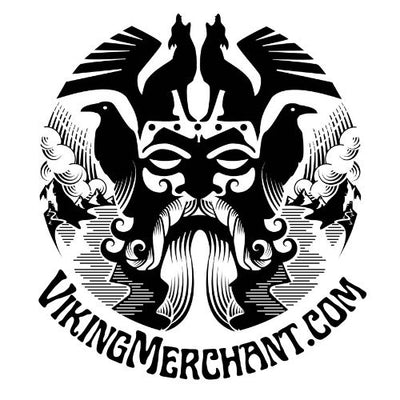How Viking Women Styled Their Hair
Posted by Amber Lee on
When we think of Vikings, fierce male warriors often come to mind. However, Viking women, with their strong personalities, roles in society, and distinctive styles, are equally captivating. One of the most intriguing aspects of Viking female culture is the way they styled their hair. Let's set sail on a journey exploring the hairstyles of these Norse women.

1. Beyond Just Beauty
Hair wasn't merely a beauty statement for Viking women; it held deeper cultural, societal, and marital significance. A woman's hair would often be intricately styled during ceremonies, festivals, and especially during her wedding. Hair also reflected one's age, marital status, and sometimes even their role in society.
2. Long and Flowing
Most Viking women had long hair. It was considered a symbol of femininity and beauty. While many women let their hair flow loose, especially the younger ones, more elaborate styles became prominent as they grew older or on special occasions.
3. Braids, Braids, and More Braids
Braiding was incredibly popular amongst Viking women. From simple three-strand braids to more intricate designs woven with ribbons or threads of gold, braids were versatile and symbolic. Some women had multiple braids, while others combined braids with loose hair for a varied look.
4. The Bun – A Symbol of Marital Status
It was common for married Viking women to tie their hair in a bun, often at the back of the head or in a more intricate updo. This was not only practical, helping to keep hair out of the way during daily chores, but it also signified that a woman was taken.
5. Hair Wraps and Accessories
Much like their male counterparts, Viking women also adorned their hair with various accessories. Beads, metal clasps, and pins were used both for decoration and to secure hairstyles. Hair wraps, where a strand of hair was wrapped with colored thread or thin gold wire, were also trendy.
6. Covering It Up
While it's believed that many Viking women often showed off their beautiful hairstyles, there are also suggestions that some women, especially married ones, covered their hair with headscarves or bonnets. This might have been a modesty or cultural practice, though interpretations vary.
7. Ritualistic Haircuts
There are some historical indications that Viking women might have cut their hair short as part of specific rituals, possibly related to fertility or as a rite of passage. However, this wasn't the norm and was reserved for particular ceremonies or traditions.
Viking women, far from being mere shadows of their male counterparts, held significant roles in society and had their unique identities. Their hairstyles, rich in symbolism and beauty, tell tales of their lives, aspirations, and the vibrant culture they inhabited. Whether braided, loose, adorned, or wrapped, Viking women's hair was a testament to their strength, status, and artistry.
